If you are a regular reader of our Blog’s articles, you already know that we talk a lot about the “Process Modeling” topic and all its importance within a BPM solution. With that in mind, we prepared a complete post that conceptualizes some points about process mapping, as well as gives some tips and examples of how to apply it in your company.
- Key Terms in Process Mapping
- Process Modeling in Practice
- Process Mapping Examples
But before we show some actual visual examples, let’s understand a bit better the concepts behind some competing terms that arise when we talk about Process Mapping.
Key Terms in Process Mapping
In order for you to understand the examples of process mapping, keep some concepts in mind:
- Process diagram: is the initial and simplified representation of the process to be modeled. In this step, the activities are placed in sequence. This initial diagram can be developed using simple tools such as Microsoft Word.
- Process Map: this is the second step towards the effective Modeling of your Process. It includes the actors, results, events, activities, flows, and other established business rules.
- Process Model: this is the final result of this sequence of steps that we have just conceptualized. We can also say that the process model is the consequence of the process map started in the previous step. Besides the elements mentioned above, this step is where we usually include the last details for our modeling, such as formulas, descriptions, comments, advanced flow decisions, integrations with other systems, and more.
Now that we have clarified these concepts, let’s take a look at some tips on how to kick-start your process modeling.
Process Modeling in Practice
The first items to be defined are the purpose and goal that we want to achieve with the modeling. Questions to be answered include:
- What will we map the process for?
- What is the main problem we want to solve with this process?
- What do we expect from this process?
If, for example, we are aware of a communication problem in a certain area, we can think about what makes people in the organization feel lost in relation to that process. By doing that, we’ll have to pay more attention to the way actors communicate, as well as make sure that information is not overlooked during the process. You can, for example, evaluate:
- What are the ways that information is passed from person to person?
- Where is essential process information starting from?
- Where is this essential information being lost?
If the objective is to verify defects that appear in a part, we can analyze the path that the part follows within the areas:
- Where does the raw material for the part come from?
- How does it leave and arrive in a certain area?
- At what points in the process do defects appear?
Once we have the scope defined, we will delimit what the physical boundaries of the process are:
- Which areas will we include in the process?
- Which ones shall we exclude?
- What flow from which part to which part of the process will we map?
When the boundaries are clear and defined, we will have a view of the points of interest of the process, as well as the most critical activities and points where your flow may stop.
Well, now that we understand some concepts and have reviewed some tips on how to start modeling, let’s take a look at some process mapping examples that are used in Fusion, through our accelerators (and that can serve as an inspiration and/or model for you to start your own modeling).
Examples of process mapping
In all of the following examples we will use the Fusion Platform BPM solution.
- Expense reimbursement: This is a process involving a claimant, the financial department, and the claimant’s area manager. The process begins when the claimant requests reimbursement for an expense. Next, it goes through a financial department analysis and then to the manager for approval, if approved by the manager, it is forwarded again to the financial department to pay the expense, and then the proof of payment is sent by e-mail to the requester. The process is then closed. If the manager does not approve the payment, the flow is closed without going to the financial department.
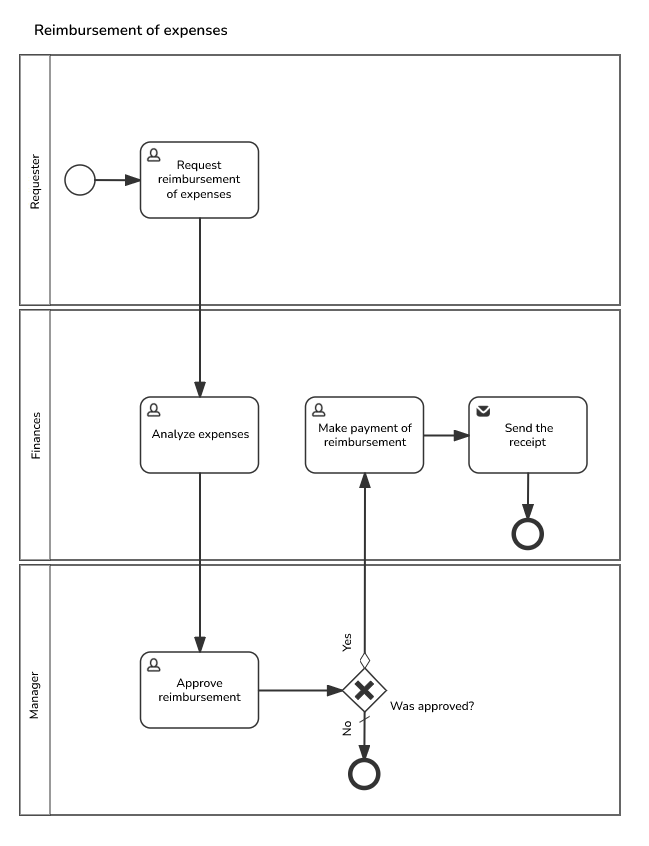
- Non Conformity Registration: This is a process to assist with the registration of non-conformities. It helps in the management of treatments through corrective and/or preventive action plans, cause analysis from the Ishikawa Diagram, and effectiveness analysis. In addition, it allows the tracking of NC’s for decision-making on the generated history.
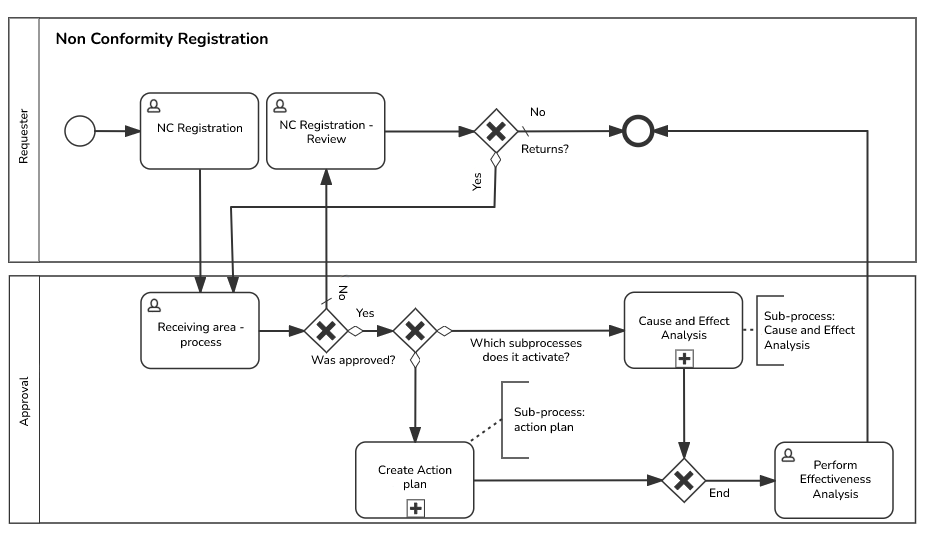
- Purchase request: This process starts at the moment the request is made. After that, it acknowledges the material that needs to be purchased and draws the flow, once approved, to proceed in the steps of quotation, quotation approval, purchase finalization, and delivery to the requester.
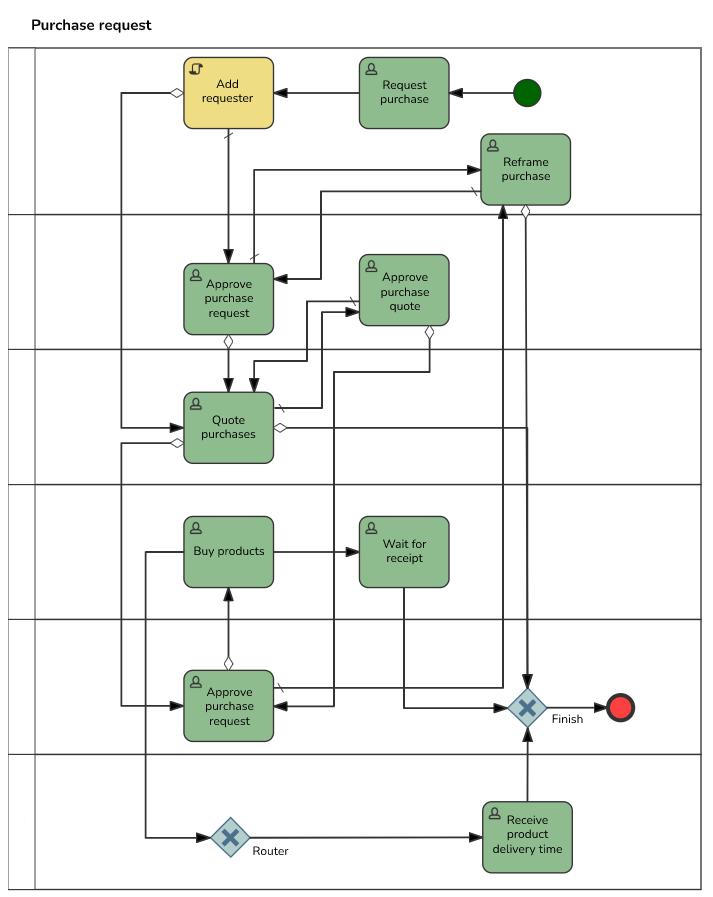
- Training request: this process allows the management of training requests integrated or not with other internal HR portals. The process begins with the training request, where it goes through cost approvals. If approved, it goes to the realization of the training and a subsequent training satisfaction survey.
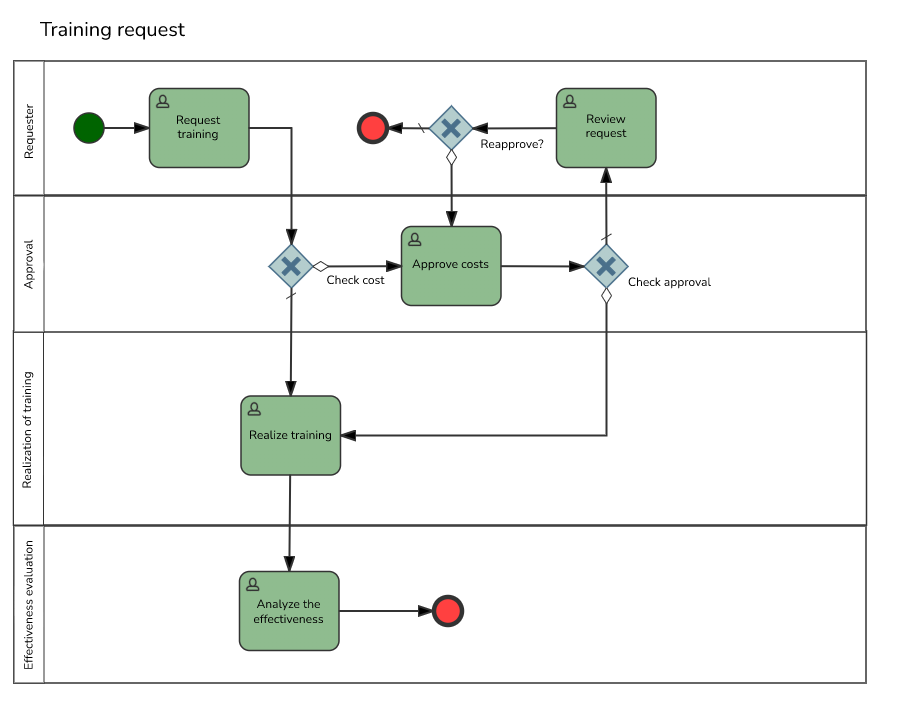
- Support management: this process focuses on managing and directing incidents that occur both within the context of IT management, and more broadly to any occurrence in the organization. It allows segmentation by incident type, problem, severity, criticality, or any other criteria. Its representation is made by a Service Order pattern but can be adapted to any need.
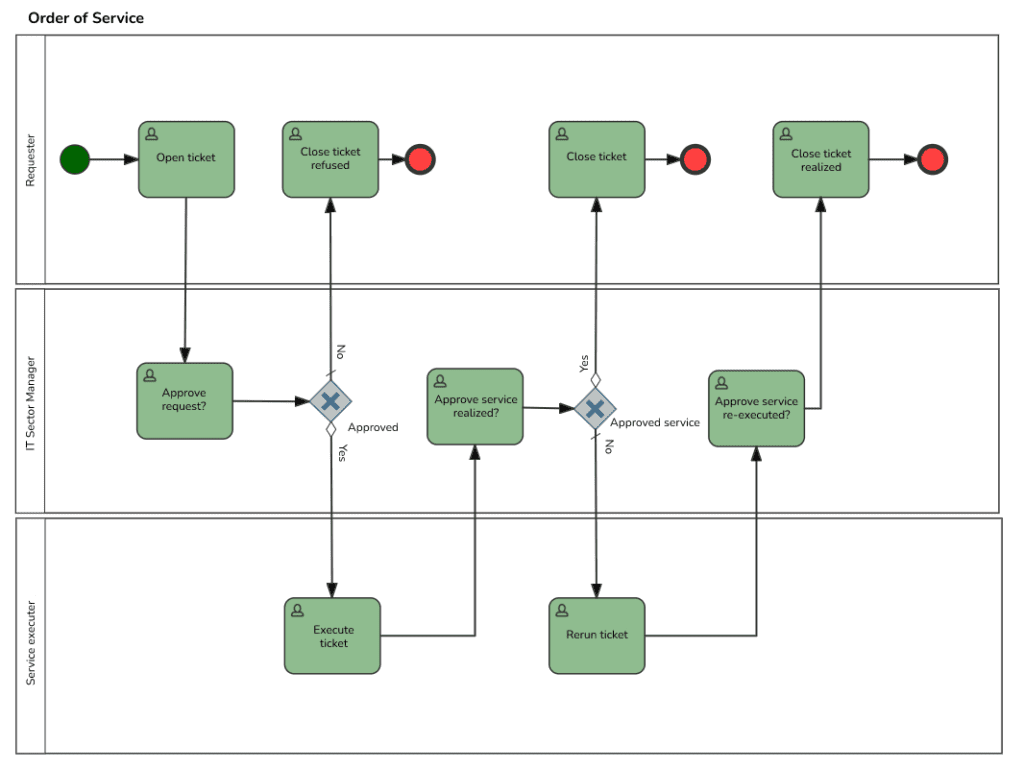
As we have seen in these process mapping examples, the task of mapping a process, defining all its attributes and relationships, and starting to model it is not a simple one. This is because it is necessary to have absolute knowledge of the business rules and departments as a whole.
However, with the application of process modeling, everything becomes simpler and more effective for the success of the corporation. A good modeling tool makes all the difference for the management of your processes.
All of the above examples were mapped and modeled on the Fusion Platform BPM solution. If you want to know more, visit our website and contact us.





